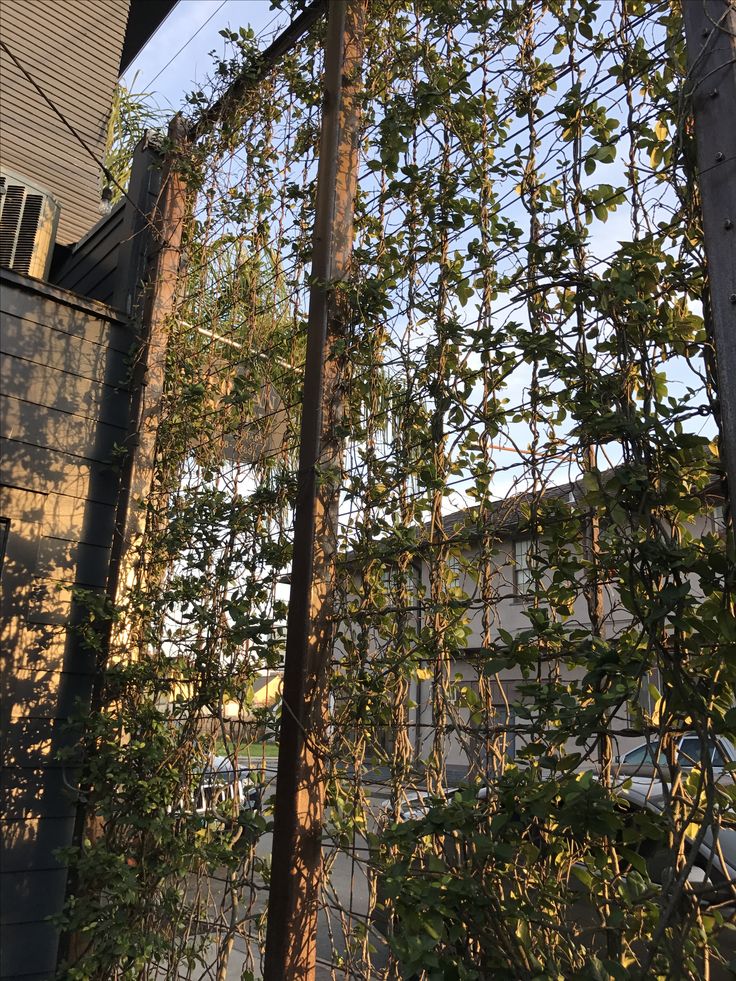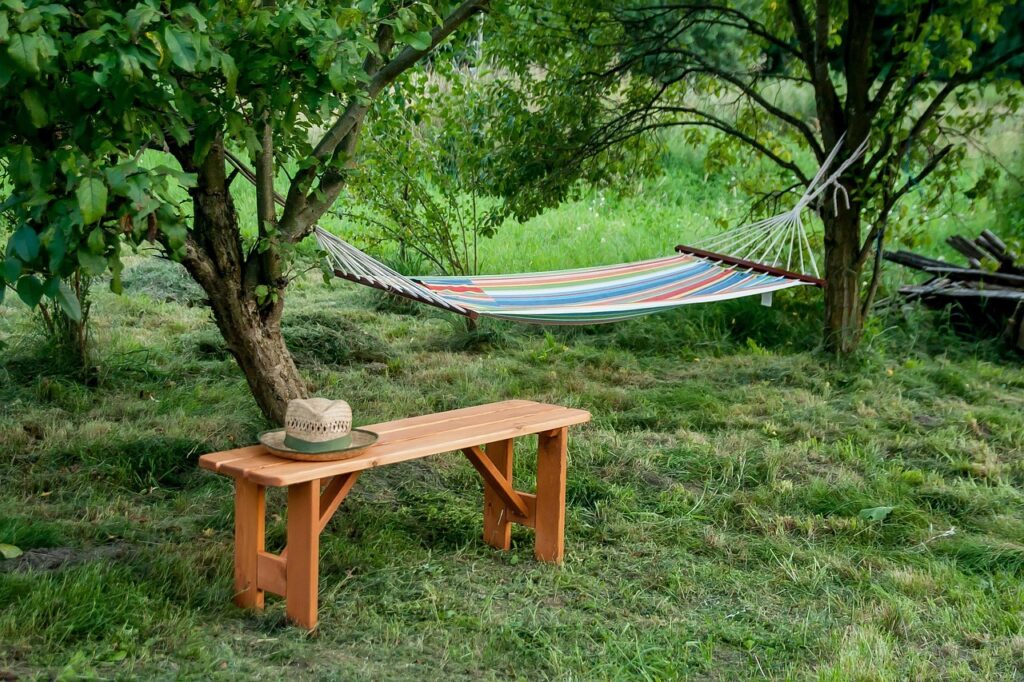My Fence‑to‑Forest Backstory
When we bought our 1950s bungalow, 60 ft of sagging chain‑link separated us from the alley. Every time I sipped coffee on the patio, that silver lattice glared back. I priced new privacy panels—cue budget panic—then remembered Gardenary’s “garden problems are just design opportunities” ethos.
One spring later, morning glory blossoms, scarlet runner beans, and native trumpet honeysuckle had consumed the metal. Birds nested, neighbors asked for seeds, and the fence faded behind foliage. Below is the method I refined—plus nine speedy vines—to help you achieve the same leafy magic minus the buyer’s‑remorse price tag.
Table of Contents
- Why Vines + Chain‑Link = Match Made in Heaven
- Fast‑Grow Cheat Sheet by Zone
- Step 1 – Scout Your Microclimate
- Step 2 – Prep Fence & Soil
- Step 3 – Plant & Train Like a Pro
- Meet the 9 Green Rockets
- Care Calendar & Maintenance Hacks
- Mixing Annuals and Perennials
- Invasiveness & Neighborly Etiquette
- Troubleshooting Quick‑Grow Vines
- Final Leafy Thoughts
Why Vines + Chain‑Link = Match Made in Heaven
- Built‑in support: The metal grid is a ready‑made trellis; zero lumber required.
- Air circulation: Open mesh prevents mildew common on solid privacy fences.
- Speed & affordability: A $4 seed packet can hide 20 ft of fence in one season.
- Wildlife perks: Nectar vines draw hummingbirds; dense growth shelters songbirds.
- Cooling effect: A green wall can drop ambient temps 5–10 °F in summer.
Fast‑Grow Cheat Sheet by Zone
| Vine | Type | USDA Zones | Sun | Growth Rate* | Evergreen? |
|---|---|---|---|---|---|
| Scarlet Runner Bean | Annual, edible | 4–9 | Full | 10 ft+ / season | No |
| Cypress Vine | Annual, pollinator | 6–10 | Full | 12 ft / season | No |
| Black‑Eyed Susan Vine | Tender perennial | 9–11 (annual elsewhere) | Full/part | 8 ft / season | No |
| Morning Glory ‘Grandpa Ott’ | Annual | 4–10 | Full | 12 ft / season | No |
| Native Trumpet Honeysuckle | Perennial | 4–9 | Full/part | 3–6 ft / year | Semi‑evergreen south |
| Star Jasmine | Perennial | 8–10 | Full/part | 4 ft / year | Yes |
| Virginia Creeper | Perennial | 3–9 | Full/part | 5–10 ft / year | No |
| Silver Lace Vine | Perennial | 5–9 | Full | 12 ft / year | Deciduous |
| Passionflower ‘Incense’ | Perennial | 6–10 | Full | 8 ft / year | Semi |
*Under average moisture & fertility.
Step 1 – Scout Your Microclimate
- Sun tally: Track hours of direct light on the fence (phone app or sticky‑note sun map). Most speed‑racers need 6+ hours.
- Soil test: Vines are hungry; pH 6–7 is ideal. Amend as needed.
- Wind exposure: Open prairie winds shred tender annuals—choose flexible stems like cypress vine.
Gardenary tip: Match the vine’s vigor to the fence length. A 20‑ft run loves runner beans; a 6‑ft gate might drown under silver lace vine.
Step 2 – Prep Fence & Soil
- Scrub rust with a wire brush; repaint spots with metal primer. Foliage hides ugly but can’t stop corrosion.
- Clear weeds a 12‑inch strip; mulch will follow.
- Dig a trench 12 in wide, 8 in deep along fence. Mix excavated soil 1:1 with compost.
- Add slow‑release organic fertilizer (5‑5‑5) per label. Fast growers are nutrient hogs.
Line the trench with cardboard first if Bermuda grass is an enemy; the cardboard suppresses regrowth and decomposes over winter.
Step 3 – Plant & Train Like a Pro
- Seed or transplant?
- Annuals: Direct‑seed after frost; soak hard seeds (morning glory) 4 hrs.
- Perennials: Buy 1‑gal nursery pots for a head start.
- Spacing: One vine every 18–24 in. Overcrowding = mildew city.
- Weave stems through mesh once they hit 8 in. Skip zip‑ties; use biodegradable jute twine.
- Mulch 2–3 in. with leaf mold or straw to hold moisture.
- Water deeply first six weeks—moist root zones fuel rocket growth.
Meet the 9 Green Rockets
1. Scarlet Runner Bean (Phaseolus coccineus)
- Pros: Edible pods, scarlet flowers hummingbirds fight over.
- Cons: Dies at first frost—plant with a perennial for winter interest.
- Pro tip: Harvest beans young; older pods toughen fast.
2. Cypress Vine (Ipomoea quamoclit)
- Fern‑like foliage + red star blooms. Self‑seeds (mind the seedlings).
- Ideal for lightweight chain‑link; stems stay thin.
3. Black‑Eyed Susan Vine (Thunbergia alata)
- Orange, white, or yellow blooms with a dark “pupil.”
- Thrives in containers too; great for short fence panels.
4. Morning Glory ‘Grandpa Ott’
- Instant fence curtain; purple funnels open at dawn.
- Can become weedy—deadhead mid‑summer to limit reseeding.
5. Native Trumpet Honeysuckle (Lonicera sempervirens)
- Coral tubes, nectar heaven, non‑invasive vs. Japanese honeysuckle.
- Semi‑evergreen in warm zones; prune lightly right after bloom.
6. Star Jasmine (Trachelospermum jasminoides)
- Evergreen glossy leaves, intoxicating fragrance.
- Needs winter protection north of zone 8; mulch roots, wrap burlap.
7. Virginia Creeper (Parthenocissus quinquefolia)
- Five‑leaf vines blaze red in fall.
- Adhesive pads grip metal without damage; prune yearly to prevent roof incursions.
8. Silver Lace Vine (Fallopia baldschuanica)
- Cloud‑like white flowers August–frost. Extremely fast—12 ft the first year.
- Aggressive; cut to 12 in. each February or contain roots in buried barrier.
9. Passionflower ‘Incense’ (Passiflora)
- Exotic purple blooms + edible fruit in warm summers.
- Dies to ground below 20 °F; mulch heavy or treat as annual outside zone 7.
Care Calendar & Maintenance Hacks
| Month | Task | Why |
|---|---|---|
| April | Direct‑seed annuals after frost; plant perennials | Soil warming triggers rapid germination |
| May–June | Side‑dress compost, weave stems, install drip line | Early fuel prevents mid‑season lag |
| July | Deadhead rampant seeders (morning glory) | Controls volunteer takeover next spring |
| August | Deep soak 1×/week if <1″ rain | Prevent leaf scorch during heat |
| Sept | Light prune, harvest seed pods, collect cuttings | Bank starts for friends or backups |
| Oct–Nov | Mulch perennials 3–4 in; cut annuals to soil | Protect crowns, tidy beds |
| Winter | Inspect fence for ice damage, plan replacements | Vine weight + ice can bend top rail |
Fertilizer schedule: Liquid seaweed/kelp every 4–6 weeks boosts micronutrients without chemical burn.
Mixing Annuals and Perennials
First year: Pair a perennial (trumpet honeysuckle) with a speed annual (runner bean). The annual delivers instant cover while the perennial establishes.
Year two: The perennial dominates; add cypress vine only in bare sun pockets.
Year three: Switch entirely to perennials or maintain a controlled annual strip for color contrast.
Invasiveness & Neighborly Etiquette
Fast growth can cross property lines—literally.
- Contain roots: For silver lace or Virginia creeper, sink 12‑in‑deep edging.
- Prune fence‑top runners monthly to keep vines off neighbor’s gutters.
- Avoid listed invasives: In the Southeast, Japanese honeysuckle and kudzu are ecological nightmares; choose natives instead.
- Share the bounty: Deliver runner bean pods or passionfruit to neighbors—they’ll love the greenery more.
Troubleshooting Quick‑Grow Vines
| Issue | Likely Cause | Fix |
|---|---|---|
| Leaves yellow, stalled growth | Nitrogen deficiency | Side‑dress blood meal or fish emulsion |
| Bottom foot of fence bare | Lack of light below canopy | Pinch tips to spur lateral shoots |
| Vines flop away from fence | Missed early training | Use soft ties; wrap figure‑8 around stems |
| Powdery mildew mid‑summer | Crowding + humidity | Thin interior stems, spray neem weekly |
| Fence leaning | Weight overload | Install metal T‑posts every 8 ft for support |
Final Leafy Thoughts
A chain‑link fence may scream “utility,” but pair it with the right fast‑growing vines and you’ll hear birdsong, smell jasmine, and snack on beans instead. Remember the rhythm:
- Prep the strip with compost.
- Plant the sprint + marathon team (annuals + perennials).
- Weave, water, and whip out the pruners when stems overstep.
Within a single season, silver metal melds into a living mural—no pricey fencing panels required. Have questions, vine victories, or cautionary jungle tales? Drop them below. Between weaving honeysuckle tendrils and sipping porch iced tea, I love swapping fence‑to‑forest stories.
Grow on, and may your chain‑link disappear in a blur of green!



